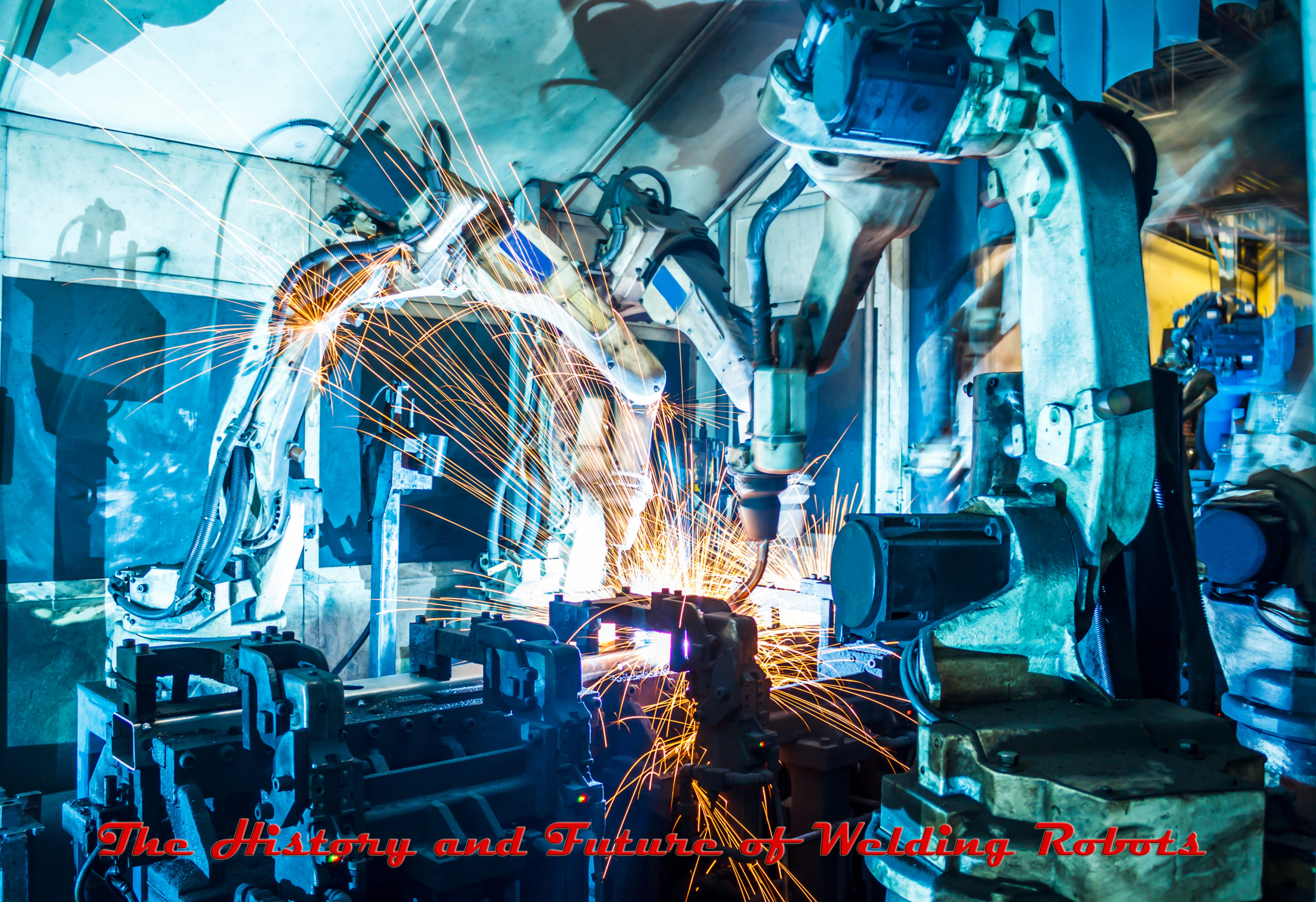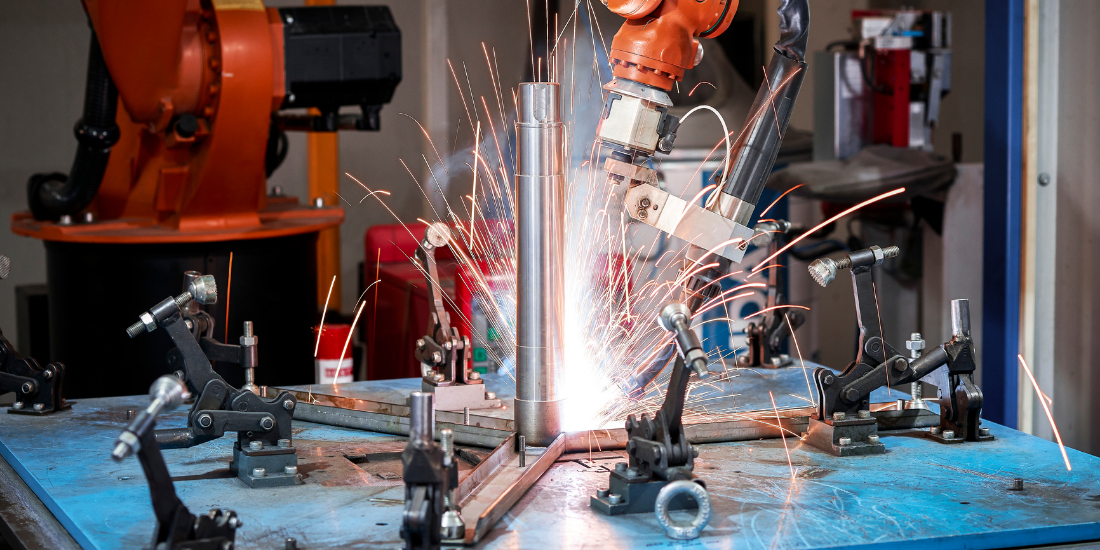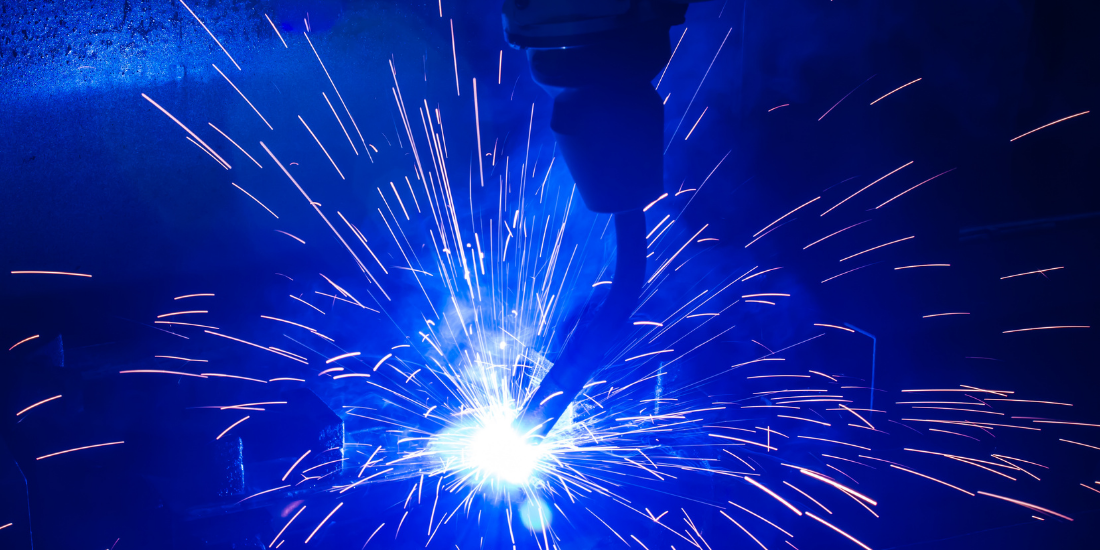
The History and Future of Welding Robots
History – it’s a beautiful thing. It teaches us about the past and helps us understand our future. It speaks to our own personal experiences. It gives us a sense of our place in time and helps determine where we want to go next. The history of welding robots is no different. It’s a fascinating tale of technological advancement and welding innovation.
Welding has always been an important part of manufacturing. It’s a process that helps bind two pieces of metal together, creating everything from cars and trucks to bridges and skyscrapers. Welding is precise, versatile, and efficient. And welding robots have been a critical player in welding innovation, making it faster and more accurate than ever before.
In this article, we dive into the past, present, and future of robotic welding systems.
The History of Welding Robots
In the beginning, welding was a very time-consuming and laborious process. It took many hours to complete just one weld on an automobile chassis — let alone welding together all of the individual components that would go into making it run. But then welding robots came along and changed everything. Welding robots increased welding speed exponentially while also reducing production costs. They could do the job of many welding operators, making the welding process more efficient and accurate.
In 1962, the first real-world application for robotic welding was discovered. The Unimation 001, a robot developed by George Devol and Joseph Engelberger, was used on an assembly line at a General Motors factory to spot weld in hazardous work that humans could not perform.
Although the first industrial robots appeared in the 1960s, it wasn’t until the 1980s that robotic welding began to grow in popularity, mostly among automobile manufacturers. Other automobile firms saw how GM benefited from welding automation and started using robotic spot welding methods in their own factories.
Simultaneously, the advantages of welding automation became more well-known, and automated welding began to gain traction in other sectors, such as metal production. Following rapid development, welding automation soon became the welding industry norm.
By the end of 2005, nearly 60,000 robotic weld cells were in use across North America. While firms may have shelved their automation plans due to the high price tag early on, costs have now lowered as more businesses adopt welding robotics automation.
Back then, it was easy to understand why robotic welding would soon be the norm in the future, given man’s interest in metals and manufacturing. Robotic welders produce high-quality, precise welds while also increasing production output on an assembly line. These welding robots save businesses money on manufacturing costs by speeding up production times, being able to work without stopping, and reducing welding defects.

The Future of Welding Robots
Fast forward to the future, and welding robots are improving at an even faster rate. In today’s world, robotic welding systems can be used for a wider variety of welding applications, and the welding process itself has improved significantly due to advanced robotic welding technology.
Although a genuinely autonomous welding automation future has yet to arrive, it is clear that the adjustments have begun. The cost of automated robotic welding is continuing to drop. This implies that automated welding may soon be accessible to more individuals than just large welding businesses. Welding automation will continue to offer cheaper and more efficient equipment, new efficiency, and improved trends as time goes on.
According to critics and supporters, the future of automation in the welding business is bright. These are some of the reasons for such optimism about its future. Despite the fact that certain characteristics appear to be disadvantageous for workers, there will be more affordable and superior-quality goods as a result of it. With fewer intermediaries needed, manufacturing will be more localized. It is welding technology like this that will shape the industry in years to come, fulfilling customer needs with welding robot innovation and welding operator dexterity.
Replacing Jobs in the Welding Industry
Despite the advances in welding automation, this concept’s future is still bleak. Currently, no artificial intelligence can take automated welding to the next level. Automation must replace people in manufacturing for this technology to work, but due to the AI revolution, welding robots will never be able to replace welding personnel.
The ability of welding robots to weld complex parts at a speed that would have been unattainable previously is one example of how advances in technology are revolutionizing the industry. This implies that welding robot automation has also given way to new welding processes and methods in order to meet demand.
As the industry changes, welders will need to be versatile and have the ability to work with different types of welding processes. This means that welders should be knowledgeable in more than one type of welding to adjust as the industry changes.
Related Questions

What is the future of welding jobs?
Welders, solderers, brazers, and cutters are expected to see a 6% increase in employment from 2016 to 2026, about as quickly as the average for all jobs. Welders, brazers, cutters, and solderers will be required to help repair bridges, highways, and buildings as the country’s aging infrastructure continues to require renovations.
Will Artificial Intelligence replace welders?
Not every welding operation will be replaced by AI robotics. Human welders will continue to weld dies and tooling, architectural welding, weld repair work, and a variety of other manufacturing jobs.
What welding positions are safe from automation?
Welding jobs that require a high level of skill and dexterity, such as pipe welding, will not be replaced by welding robots anytime soon. In addition to this, programmers and welding robot operators will also be in demand as welding automation becomes more common.
The Conclusion
Welding automation technology has brought about many changes in the welding industry. These shifts have led to new welding processes and methods, which welders will need to be knowledgeable about in order to adjust as the industry changes.
Welders who are able to weld in different positions will also be more advantageous. As welding robot automation continues to evolve, it’s likely that welding robots will be used in more welding jobs in the future.
For more information on welding robots and welding automation, visit our blog post regularly to stay up to date on the latest welding robot trends and welding technology.
